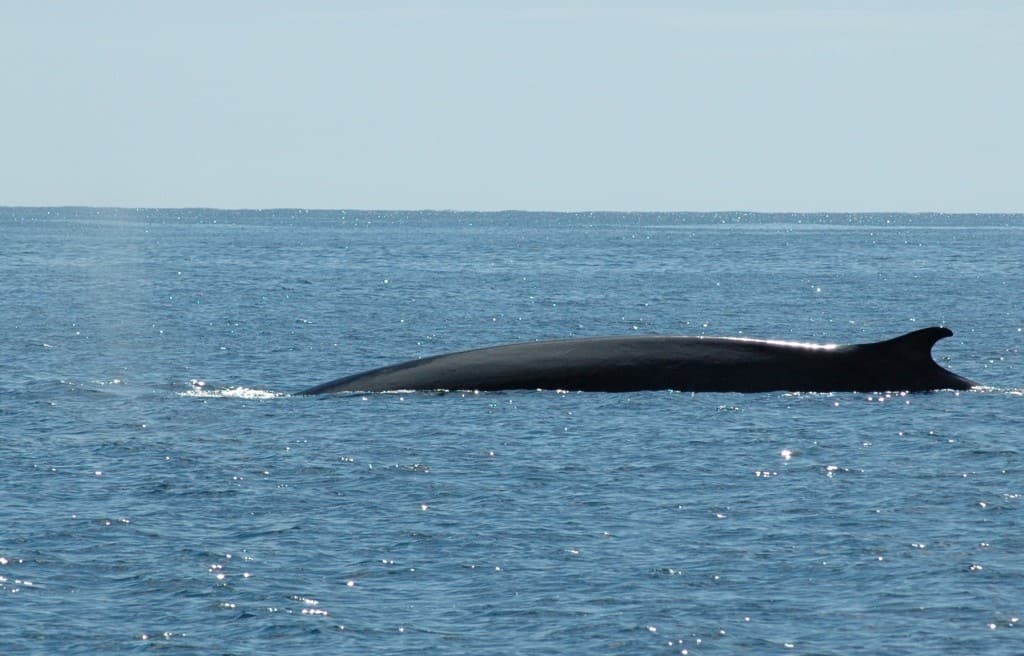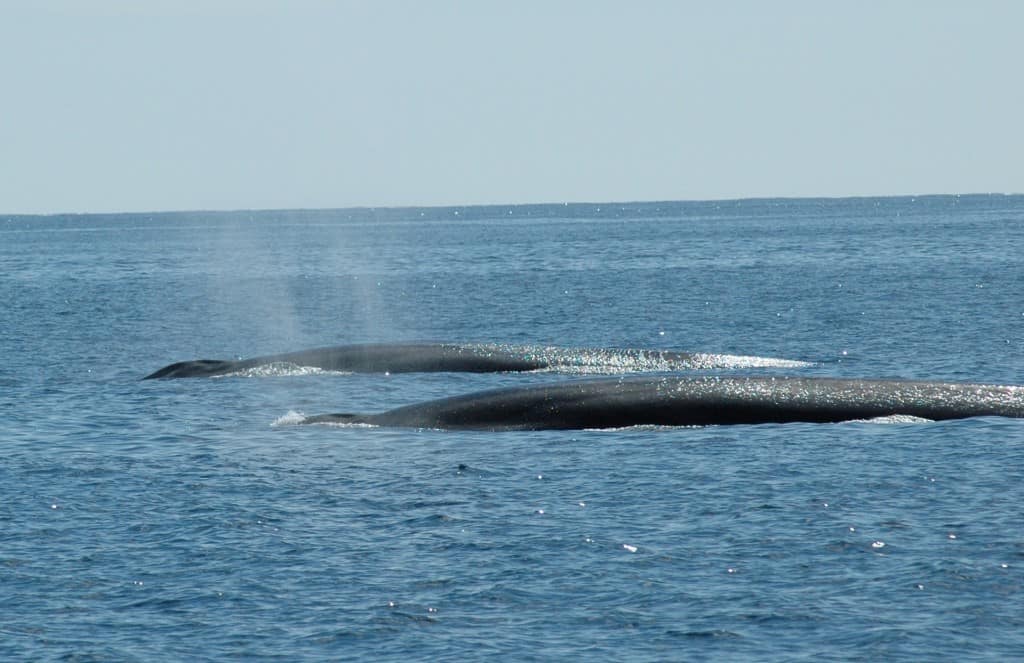The second largest mammal of earth, the mighty fin whale (Balaenoptera physalus) is frequently seen in Irish inshore waters during the autumn and winter months. A pelagic species that spends most of their time well offshore; these large baleen whales move into coastal waters off the southern Irish coastline every year in search of the herring shoals on which they feed. Numbers vary each year but Ireland is one of the few locations in the world where fin whales can be seen with a land backdrop as they venture as close as a few hundredmetersoff the rocky shoreline.
Little is known of the movement patterns of this large cetacean in the northern hemisphere but the north Atlantic population is considered to number in the region of 14,000 animals. Whaling activities were responsible for the serious decline in their numbers globally but a moratorium on commercial whaling put in place in the mid 1980’s saw an increase in their numbers both north and south of the equator. Inclusion of this “at risk” species in the current commercial whalingcampaigns of Iceland and Japanmayjeopardizetheir precarious conservation status.


Nic Slocum
Nic Slocum is an experienced naturalist and wildlife guide and is best known for his escorted tours taking enthusiasts out, both in Ireland and overseas, to view and photograph whales and dolphins. Nic maintains a lifelong passion for using the written word to promote the conservation of our wildlife and wild places and has appeared as an expert commentator on both radio and TV. A zoologist by training, Nic has published articles on conservation related issues in regional and national newspapers. Nic is a director of Whale Watch West Cork.com and Whales World Wide.com
- Web |
- More Posts(24)



Leave a Reply